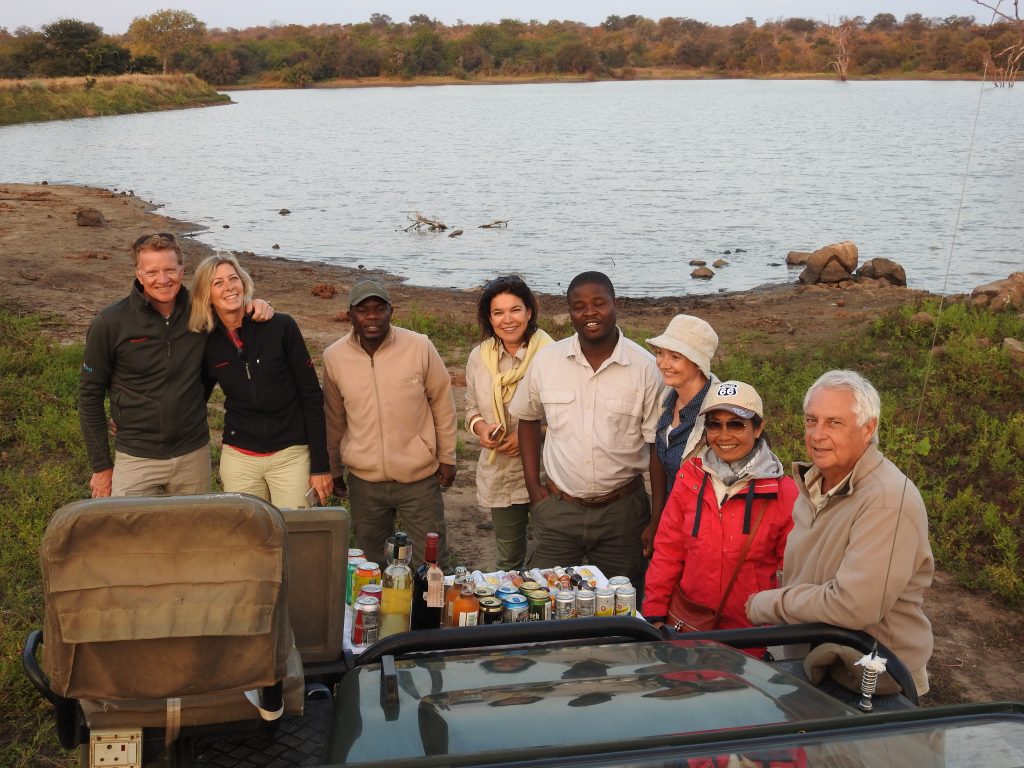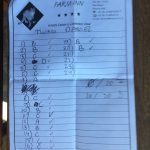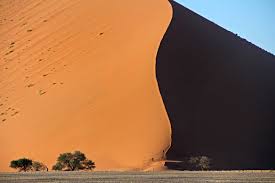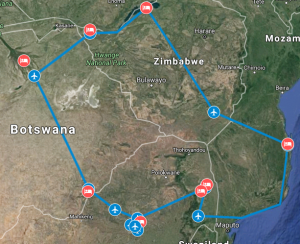 These were our two last legs of the self-flying safari, first flying from Maun to Gabarone, which is the Botswana capital, a 338 nm, 3:50 flight.
These were our two last legs of the self-flying safari, first flying from Maun to Gabarone, which is the Botswana capital, a 338 nm, 3:50 flight.
I veered a bit to the East, to overfly the salt ponds, local pilots told us we could spot amazing sights of flamingos over those ponds. We were unfortunately out of luck, it was just saw salt ponds and desert. The restricted areas you see on the chart are only up to 1000 ft AGL, the big one is over the Kalahari Desert. I love that name Kalahari, in retrospect we should have flown over it, low.
We landed in Gabarone and it took a while for a fuel truck to come over. Ania needed to go a restroom, so off she went to the terminal. It is actually quite easy to get in from the apron to the terminal, you just go through a door. Getting out though, when you don’t have a boarding pass, a passport nor any document actually is a different matter. After I got my fuel and parked the airplane, I donned my reflective vest, took my pilot license and passport and went to look for her. A severe looking security officer admonished me for letting passengers wander alone on the apron, I apologized profusely and recovered my slightly irritated wife from the police station where she was detained.
Here is an important lesson about flying in Africa: you better have a reflective vest. I didn’t have one in Maun and after watching Marie, a fellow pilot admonished by another full of himself security screener for not having such an important security item, I promptly stole one from the van driver – it served me well in Gabarone. Before my next trip to Africa, I’ll get one with Cirrus Airlines – Pilot embroiled in large letters. That and a pilot shirt with epaulets are must have around here. Also, you gotta marvel at the logic of having us to throw away bottled water before getting to our own airplanes and fly over hundreds of miles of desert. Luckily, Delta Air personnel was more understanding and smuggled our water past security.
Gabarone is a real city, modern and growing. We spent the night in Masa Square Hotel, a hotel that could be anywhere in the West – modern and functional. Well, to a point, because the operating procedure seemed to be to first place the guest in a room without working air conditioning and only move him to one with working air conditioning when he complains. It was nice to take a real shower after the bucket-shower in Oddballs Camp. We had our last group dinner at the roof terrace of the hotel, this was a great way to say goodbye to many new friends.
 Our last 150 nm, 1:15 flight took us from Botswana back to South Africa, Lanseria airport. When coming into FALA, there is a VFR reporting point called Hartebeespoort Dam. I think that I can be excused from not understanding when the controller asked: “Are you familiar with ?#&%* ?” When I valiantly replied Unfamiliar, foreign pilot, his next question was Do you know where the Lanseria airport is?. Indignantly, I replied: Affirmative, I have a GPS.
Our last 150 nm, 1:15 flight took us from Botswana back to South Africa, Lanseria airport. When coming into FALA, there is a VFR reporting point called Hartebeespoort Dam. I think that I can be excused from not understanding when the controller asked: “Are you familiar with ?#&%* ?” When I valiantly replied Unfamiliar, foreign pilot, his next question was Do you know where the Lanseria airport is?. Indignantly, I replied: Affirmative, I have a GPS.
We left ZS-SOE at the apron in Lanseria. Johan, the airplane owner kindly agreed to pick her up from there, which worked great for us, because out next (commercial) flight was leaving from Lanseria for Cape Town. She is a great and fast 182 and we were happy flying it. She has a fuel totalizer, which is really important when you fly long distances and served us very well. Safe flights, Zulu Sierra Sierra Oscar Echo.
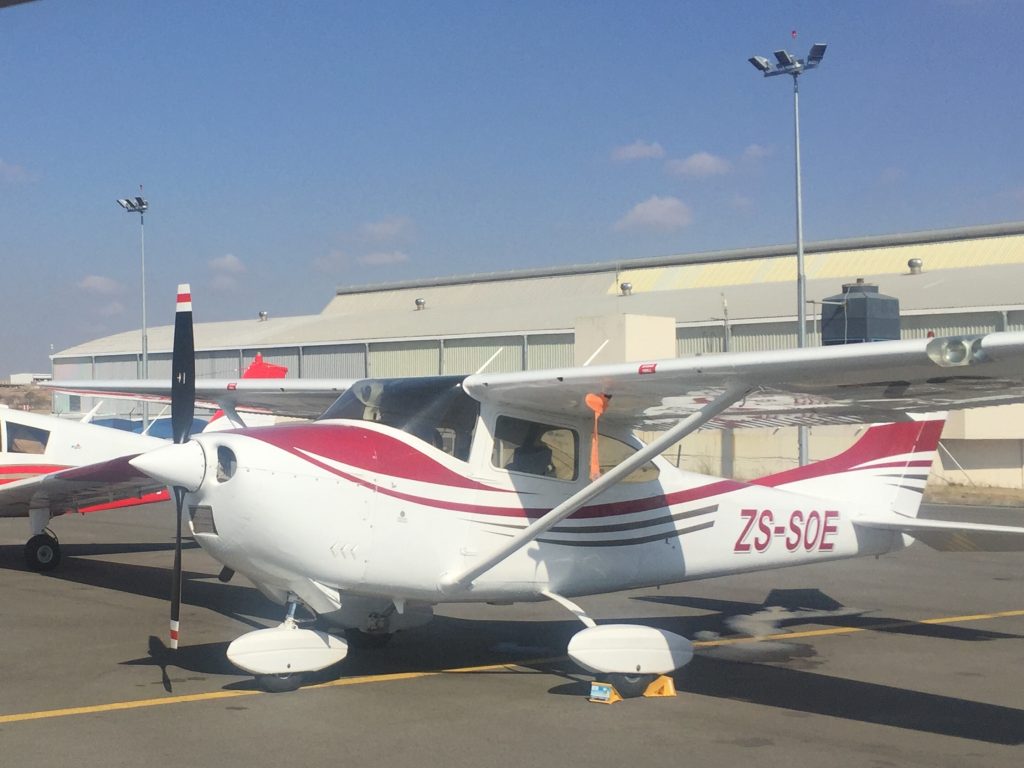

 Our next 220 nm, 1:45 flight brought us to Maun, Botswana. As usual for international flights, we needed flight plans and general declaration to leave Zimbabwe, plus $85 in various landing, takeoff, passenger, navigation… fees. I flew a bit of a northern route, hoping to see more game from the air and also overfly the
Our next 220 nm, 1:45 flight brought us to Maun, Botswana. As usual for international flights, we needed flight plans and general declaration to leave Zimbabwe, plus $85 in various landing, takeoff, passenger, navigation… fees. I flew a bit of a northern route, hoping to see more game from the air and also overfly the 
 The small structure on the right was a bathroom. I know what you are thinking: a private bathroom at a camping site, that’s not really a camping. Wait, it gets better, there was a shower. You pour the water into a bucket, you hoist the bucket up, you open the tap and voila: you get a shower. There was even cold water and not-so-cold water.
The small structure on the right was a bathroom. I know what you are thinking: a private bathroom at a camping site, that’s not really a camping. Wait, it gets better, there was a shower. You pour the water into a bucket, you hoist the bucket up, you open the tap and voila: you get a shower. There was even cold water and not-so-cold water.
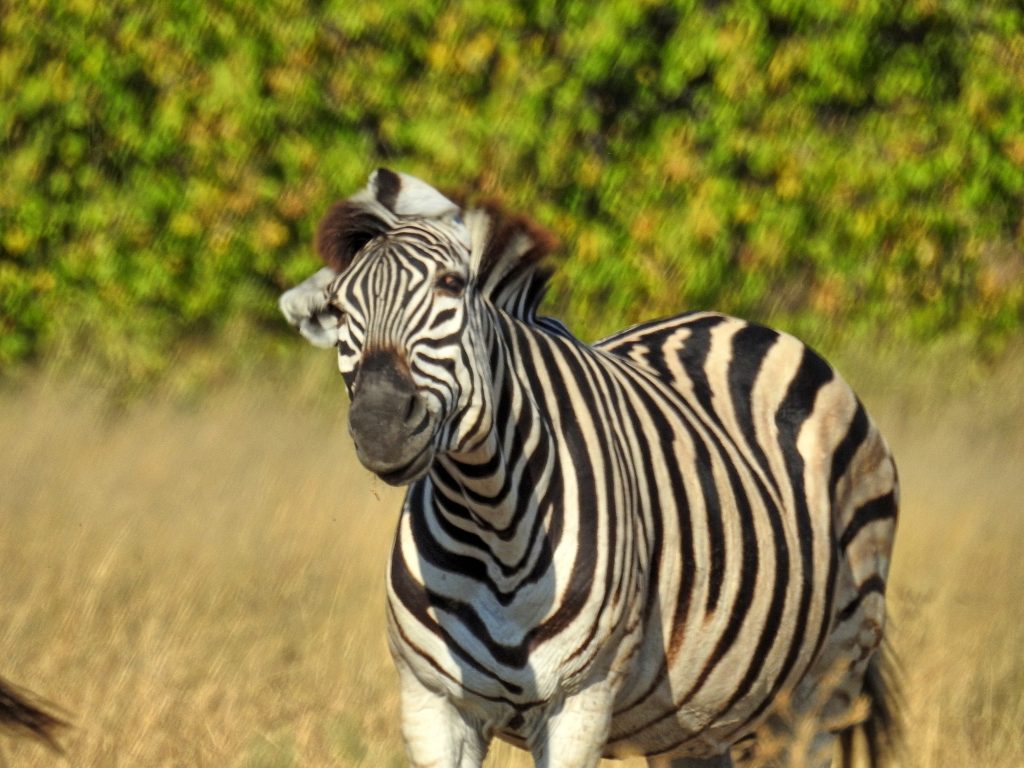
 Our next leg started with a short 50 nm, half an hour flight along the shore of the lake to the Kariba airport, for refueling. This was by far the most efficient airport in Zimbabwe, the fuel pump was working, the credit card machine was working, the controller was very professional. We didn’t have much time to linger around and we continued with the second leg, 250 nm, 2 hours along the Zambezi river to Victoria Falls.
Our next leg started with a short 50 nm, half an hour flight along the shore of the lake to the Kariba airport, for refueling. This was by far the most efficient airport in Zimbabwe, the fuel pump was working, the credit card machine was working, the controller was very professional. We didn’t have much time to linger around and we continued with the second leg, 250 nm, 2 hours along the Zambezi river to Victoria Falls.
 After landing, we drove to the Victoria Falls hotel. This is an epitome of an old colonial hotel, still in great shape, but with average service and average rooms. Most impressive though were the common areas, reminding travelers of old bygone splendid times.
After landing, we drove to the Victoria Falls hotel. This is an epitome of an old colonial hotel, still in great shape, but with average service and average rooms. Most impressive though were the common areas, reminding travelers of old bygone splendid times.
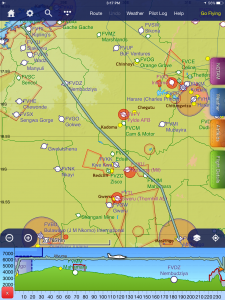 Lake Kariba is the largest man-made reservoir in the world, it covers an area of 5,580 km2, that’s over one quarter of Lake Ontario.
Lake Kariba is the largest man-made reservoir in the world, it covers an area of 5,580 km2, that’s over one quarter of Lake Ontario. Bumi Hills Safari Lodge
Bumi Hills Safari Lodge




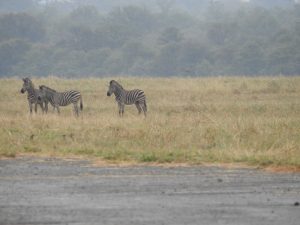

 It has been pretty crazy days. We left Johannesburg, Wonderboom field on Sunday and flew 210 nm (1:30) to
It has been pretty crazy days. We left Johannesburg, Wonderboom field on Sunday and flew 210 nm (1:30) to 

